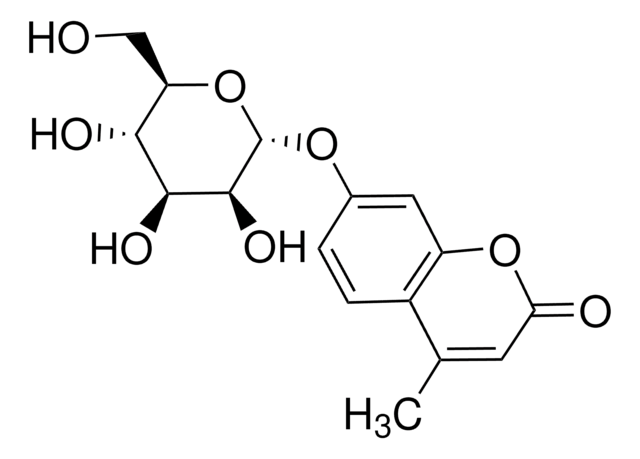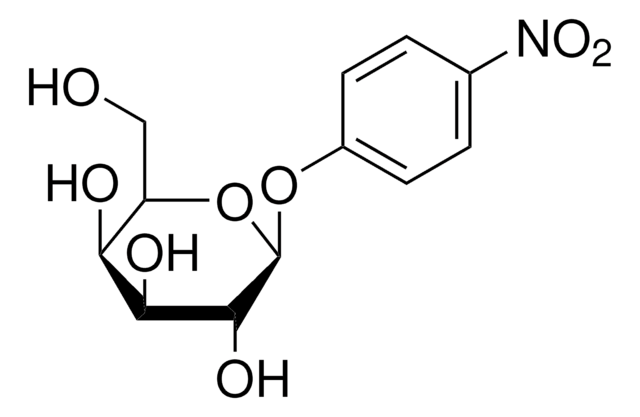M8527
4-Methylumbelliferyl α-L-fucopyranoside
fluorogenic, ≥97% (TLC), powder
Synonym(s):
4-Methylumbelliferyl alpha-L-fucopyranoside
About This Item
Recommended Products
product name
4-Methylumbelliferyl α-L-fucopyranoside, ≥97% (TLC)
Assay
≥97% (TLC)
form
powder
solubility
DMF: 100 mg/mL, clear, colorless to faintly yellow
fluorescence
λex 360 nm; λem 449 nm (Reaction product)
storage temp.
−20°C
SMILES string
C[C@@H]1O[C@@H](Oc2ccc3C(C)=CC(=O)Oc3c2)[C@@H](O)[C@H](O)[C@@H]1O
InChI
1S/C16H18O7/c1-7-5-12(17)23-11-6-9(3-4-10(7)11)22-16-15(20)14(19)13(18)8(2)21-16/h3-6,8,13-16,18-20H,1-2H3/t8-,13+,14+,15-,16-/m0/s1
InChI key
CQKHENXHLAUMBH-CRLRYRHBSA-N
Looking for similar products? Visit Product Comparison Guide
Application
- as a substrate in α-L-fucosidase 1 (α-L-FUCA-1) enzyme assays to convert it to the fluorescent product 4-methylumbelliferone (4MU) for finding the distribution of the membrane-associated α-L-FUCA-1 of human sperm
- as a fluorogenic substrate in enzyme assays to evaluate the stability of both the seminal plasma and membrane-associated α-l-fucosidase
- as a substrate to measure the enzymatic activity of α-L-FUCA-1 of cell extracts from TPC-1, BCPAP, 8505C, and CAL62 cell lines
Substrates
Storage Class Code
11 - Combustible Solids
WGK
WGK 3
Flash Point(F)
Not applicable
Flash Point(C)
Not applicable
Personal Protective Equipment
Certificates of Analysis (COA)
Search for Certificates of Analysis (COA) by entering the products Lot/Batch Number. Lot and Batch Numbers can be found on a product’s label following the words ‘Lot’ or ‘Batch’.
Already Own This Product?
Find documentation for the products that you have recently purchased in the Document Library.
Customers Also Viewed
Our team of scientists has experience in all areas of research including Life Science, Material Science, Chemical Synthesis, Chromatography, Analytical and many others.
Contact Technical Service













